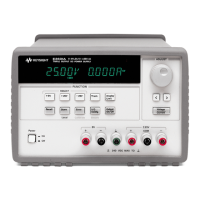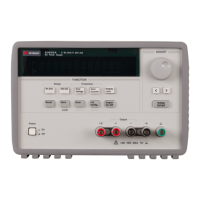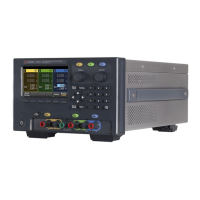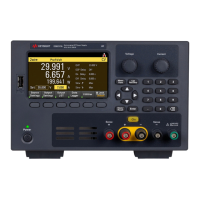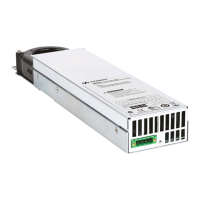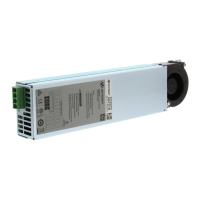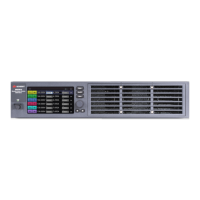Operation and Features 2
RS-232 Interface Configuration
E3632A User’s Guide 61
The power supply sets the DTR line FALSE in the following
cases:
1 When the power supply’s input buffer is full (when
approximately 100 characters have been received), it sets
the DTR line FALSE (pin 4 on the RS- 232 connector).
When enough characters have been removed to make
space in the input buffer, the power supply sets the DTR
line TRUE, unless the second case (see next) prevents
this.
2 When the power supply wants to “talk” over the interface
(which means that it has processed a query) and has
received a <new line> message terminator, it will set the
DTR line FALSE. This implies that once a query has been
sent to the power supply, the bus controller should read
the response before attempting to send more data. It also
means that a <new line> must terminate the command
string. After the response has been output, the power
supply sets the DTR line TRUE again, unless the first case
(see above) prevents this.
The power supply monitors the DSR line to determine when
the bus controller is ready to accept data over the interface.
The power supply monitors the DSR line (pin 6 on the
RS- 232 connector) before each character is sent. The output
is suspended if the DSR line is FALSE. When the DSR line
goes TRUE, transmission will resume.
The power supply holds the DTR line FALSE while output is
suspended. A form of interface deadlock exists until the bus
controller asserts the DSR line TRUE to allow the power
supply to complete the transmission. You can break the
interface deadlock by sending the <Ctrl- C> character, which
clears the operation in progress and discards pending output
(this is equivalent to the IEEE- 488 device clear action).
For the <Ctrl-C> character to be recognized reliably by the power supply
while it holds DTR FALSE, the bus controller must first set DSR FALSE.
